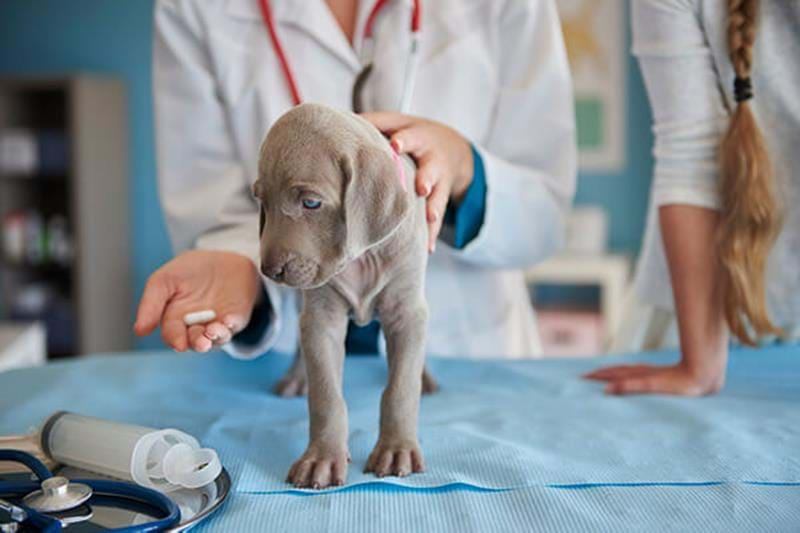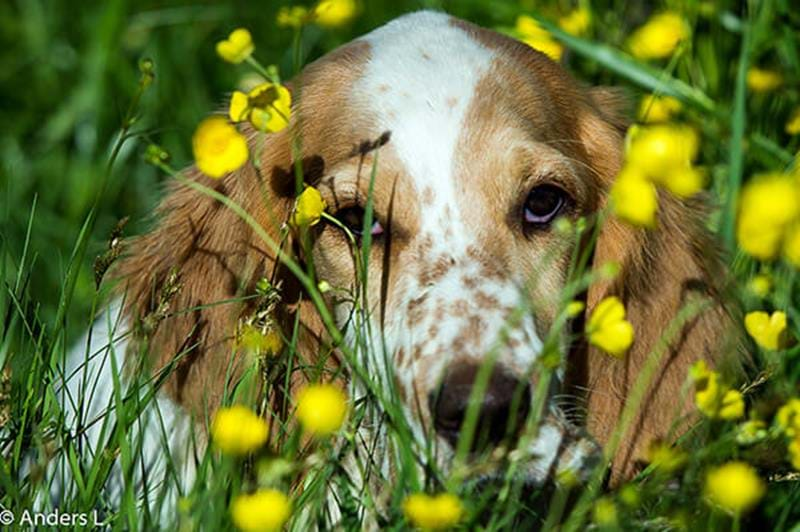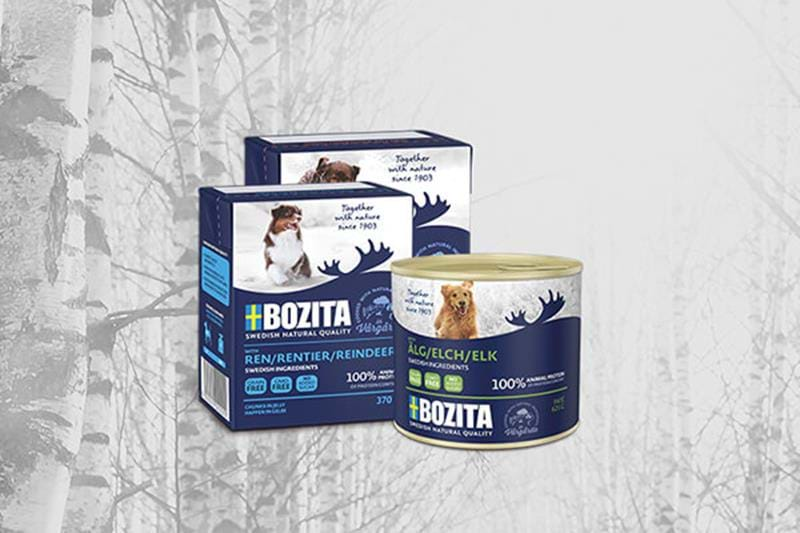Your dog’s permanent teeth grow when it is around four months old, and they will last them a lifetime. To maintain good oral health, stop the build up of tartar and prevent other problems, the best method is to brush your dog’s teeth regularly. Also check the dog’s teeth, bite and mouth at regular intervals. Dogs often show little or no symptoms of teeth and mouth problems, so issues can be difficult to detect.
TAKE CARE OF YOUR DOG’S TEETH AND ORAL HYGIENE
Your dog’s permanent teeth should last a lifetime with care and attention.
Make it a regular habit to brush your dog’s teeth every day and check its teeth and mouth regularly. Start practicing when your dog is a puppy by looking in their mouth. Letting your dog chew on things that keep the tartar away is another good idea, but it does not replace brushing the teeth. Avoid marrow bones that are too hard and can damage the teeth.
Many dogs show little or no symptoms of mouth problems, so problems can be difficult to detect. Signs that something is wrong may be that the dog prefers soft food over hard food, that it only chews on one side or not at all, bad breath and excessive drooling, decreased appetite or chattering teeth. Contact your veterinarian if you suspect your dog is having problems.
BRUSH YOUR DOG’S TEETH WITH TOOTHBRUSH AND AVOID TARTAR
Even dogs get plaque on their teeth from food scraps and saliva. If the plaque is not removed, it becomes tartar, and your dog might even suffer from more serious problems such as inflammation of the gums and tooth loss. The tendency to form tartar varies from dog to dog. Breeds whose teeth are closer together may, for example, be more vulnerable to getting tartar. In addition, older dogs have a tendency to suffer from tartar more easily. Lighter tartar can be removed by brushing your dog’s teeth with a toothbrush, but more stubborn tartar must be removed by a veterinarian under anesthesia.
The best way to keep your dog’s oral health in great condition is to prevent tartar by establishing a daily routine for brushing teeth and cleaning your dog’s mouth from plaque. Start when the dog is a puppy, get your dog used to the toothbrush and make brushing teeth a regular habit. In the beginning, 10 seconds of brushing may be enough. Increase the time gradually until you can brush all the dog’s teeth without problems.
There are special toothpaste for dogs that smell and taste nice, but the mechanical movement is actually the most important. Do not use a toothpaste meant for humans, as fluoride and other ingredients in human’s toothpaste can be harmful for the dog. What comes to the type of toothbrush you should use for your dog, you can choose almost any toothbrush. Just make sure that it should not be too hard. There are also special toothbrushes for dogs that help to reach those nooks and crannies that are hard to reach.
Your dog’s teeth should be white and the gums light pink. Dogs can have darker pigmentation in their mouths, just like skin and fur.
PUPPY TEETH
Your dog’s puppy teeth begin to appear when it is around three weeks old. It usually coincides with when their mother’s milk production begins to decrease. All the puppy teeth are present around the age of six weeks. In total, puppies get 28 teeth, 14 in the upper jaw and 14 in the lower jaw. Usually the two canine teeth of the upper jaw appear first, followed by the six front teeth. The molar teeth usually appear in the lower jaw first.
DOG’S PERMANENT TEETH
When your dog is about four months old, the puppy teeth will be replaced with the dog’s adult teeth. All the permanent teeth, a total of 42, are usually fully grown by the time your dog is around six months old.
Check that the permanent teeth are growing as they should. It may happen that the permanent tooth grows next to the milk tooth, called persistent deciduous teeth. The phenomenon is more common in smaller dog breeds. Always contact a veterinarian to extract deciduous teeth that persist. Lack of space can lead to inflammation and tartar in your dog’s teeth. A veterinarian can also see if any teeth are missing as well as detect any bite defects in advance.
It is common that the puppy’s desire to chew on different things becomes stronger just before the puppy’s teeth change. When the process of changing teeth starts, the puppy’s mouth can become so sore that its appetite diminishes for a while. To make the process easier, you can soak the dry food or switch to a softer food temporarily.
The root canal of the tooth only closes when the dog is 1.5–2 years old, before which the dog’s teeth are more fragile. Therefore, remember not to give your dog bones that are too hard or let them fetch heavy things when they are young.
IT IS IMPORTANT THAT YOUR DOG’S BITE IS RIGHT
It’s important that your dog’s bite is correct so that it doesn’t have any problems with, for example, increased wear on the teeth, pain or problems eating.
When your dog bites its jaws, the front teeth of the upper jaw should touch the front teeth of the lower jaw, but the upper front teeth should just slide in front of the lower front teeth.
DOG’S TEETH AND THEIR FUNCTION
An adult dog has 42 teeth, 12 front teeth, four canines, 16 front molar teeth and 10 rear molar teeth.
Your dog uses the 12 front teeth (six up and six down) to gnaw on meat from a bone or to scratch.
The canine teeth (two in the upper jaw and two in the lower jaw), or “fangs”, are the dog’s longest teeth and are used to grasp and hold things. The canines are also the teeth that it uses in the fight with other dogs and which can cause deep wounds. The roots of the canine teeth are very long and the attachment of the teeth is very strong.
There are 16 front molar teeth, eight in the upper jaw and eight in the lower jaw. The dog uses the front molar teeth are mainly for grasping, while the rear molar teeth have a wider chewing surface and are primarily used for chewing. There are 10 back molar teeth, four in the upper jaw and six in the lower jaw. These teeth have a large chewing surface, and they are mainly for grinding and crushing food.
The two largest posterior molars in the lower jaw and the two largest anterior molars in the upper jaw are often called the predatory teeth. They are very strong together.







